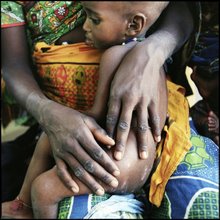PREAMBLE Canada’s minority Conservative government is currently considering Bill S-10, the Penalties for Organized Drug Crime Act. This Bill proposes amendments to the Controlled Drugs and Substances Act and other related Acts, including the introduction of mandatory minimum prison sentences.
Unfortunately, this proposed legislation and its provisions demonstrate an approach to policy development that is ideological and not evidence-based and that will likely not meaningfully improve health and safety in Canadian communities.
Research indicates that the approach proposed by Bill S-10 will only serve to create greater health and social harms. Canada needs an evidence-based approach to drug policy that prioritizes public health, not costly incarceration schemes that will take resources away from effective prevention and treatment initiatives.
As health professionals and health systems researchers, our goal is to improve public health and safety. Pacific Health & Development Sciences Inc. recently joined the Canadian Public Health Association, the Urban Health Research Initiative and the BC Centre for Excellence in HIV/AIDS in petitioning the federal government on behalf of doctors, scientists, researchers, and scholars concerned about this proposed legislation, and particularly the potential impact of introducing mandatory minimum sentences.
In support of this position, this issue of PacificSci Global Perspectives draws attention to the Vienna Declaration (www.viennadeclaration.com). The Declaration is a scientific statement seeking to improve community health and safety by calling for the incorporation of evidence based research into the development of illicit drug policies.
The Vienna Declaration was the official declaration of the XVIII International AIDS conference (AIDS 2010) held in Vienna, Austria from July 18-23, 2010.
Since its launch on June 27, 2010, the Vienna Declaration has been endorsed by six Nobel Laureates, thousands of scientific experts, law enforcement leaders, and former heads of state including Fernando Henrique Cardoso (former President of Brazil), Ernesto Zedillo (former President of México) and César Gaviria (former President of Colombia). In Canada, the declaration has been signed by five chief provincial medical health officers, the Canadian Public Health Association, the Health Officers Council of British Columbia, and a growing number of municipalities which deal with these issues first hand. Pacific Health & Development Sciences Inc. also has signed.
The VIENNA DECLARATION
[Note: We took the liberty of adding italics to highlight particular areas of emphasis. The wording is otherwise unchanged.]
In response to the health and social harms of illegal drugs, a large international drug prohibition regime has been developed under the umbrella of the United Nations.(1) Decades of research provide a comprehensive assessment of the impacts of the global “War on Drugs” and, in the wake of the XVIII International AIDS Conference in Vienna, Austria, the international scientific community calls for an acknowledgement of the limits and harms of drug prohibition, and for drug policy reform to remove barriers to effective HIV prevention, treatment and care.
The evidence that law enforcement has failed to prevent the availability of illegal drugs, in communities where there is demand, is now unambiguous.(2),(3) Over the last several decades, national and international drug surveillance systems have demonstrated a general pattern of falling drug prices and increasing drug purity—despite massive investments in drug law enforcement.(4),(5)
Furthermore, there is no evidence that increasing the ferocity of law enforcement meaningfully reduces the prevalence of drug use.(6) The data also clearly demonstrate that the number of countries in which people inject illegal drugs is growing, with women and children becoming increasingly affected.(7) Outside of sub-Saharan Africa, injection drug use accounts for approximately one in three new cases of HIV.(8),(9) In some areas where HIV is spreading most rapidly, such as Eastern Europe and Central Asia, HIV prevalence can be as high as 70% among people who inject drugs, and in some areas more than 80% of all HIV cases are among this group.(10)
In the context of overwhelming evidence that drug law enforcement has failed to achieve its stated objectives, it is important that its harmful consequences be acknowledged and addressed. These consequences include but are not limited to:
• HIV epidemics fuelled by the criminalisation of people who use illicit drugs and by prohibitions on the provision of sterile needles and opioid substitution treatment.(11), (12)
• HIV outbreaks among incarcerated and institutionalised drug users as a result of punitive laws and policies and a lack of HIV prevention services in these settings.(13),(14),(15)
• The undermining of public health systems when law enforcement drives drug users away from prevention and care services and into environments where the risk of infectious disease transmission (e.g., HIV, hepatitis C & B, and tuberculosis) and other harms is increased.(16),(17),(18)
• A crisis in criminal justice systems as a result of record incarceration rates in a number of nations.(19),(20) This has negatively affected the social functioning of entire communities. While racial disparities in incarceration rates for drug offences are evident in countries all over the world, the impact has been particularly severe in the US, where approximately one in nine African-American males in the age group 20 to 34 is incarcerated on any given day, primarily as a result of drug law enforcement.(21)
• Stigma towards people who use illicit drugs, which reinforces the political popularity of criminalising drug users and undermines HIV prevention and other health promotion efforts.(22),(23)
• Severe human rights violations, including torture, forced labour, inhuman and degrading treatment, and execution of drug offenders in a number of countries.(24),(25)
• A massive illicit market worth an estimated annual value of US$320 billion.(26) These profits remain entirely outside the control of government. They fuel crime, violence and corruption in countless urban communities and have destabilised entire countries, such as Colombia, Mexico and Afghanistan.(27)
• Billions of tax dollars wasted on a “War on Drugs” approach to drug control that does not achieve its stated objectives and, instead, directly or indirectly contributes to the above harms.(28)
Unfortunately, evidence of the failure of drug prohibition to achieve its stated goals, as well as the severe negative consequences of these policies, is often denied by those with vested interests in maintaining the status quo.(29) This has created confusion among the public and has cost countless lives.
Governments and international organisations have ethical and legal obligations to respond to this crisis and must seek to enact alternative evidence-based strategies that can effectively reduce the harms of drugs without creating harms of their own.
We, the undersigned, call on governments and international organisations, including the United Nations, to:
• Undertake a transparent review of the effectiveness of current drug policies.
• Implement and evaluate a science-based public health approach to address the individual and community harms stemming from illicit drug use.
• Decriminalise drug users, scale up evidence-based drug dependence treatment options and abolish ineffective compulsory drug treatment centres that violate the Universal Declaration of Human Rights.(30)
• Unequivocally endorse and scale up funding for the implementation of the comprehensive package of HIV interventions spelled out in the WHO, UNODC and UNAIDS Target Setting Guide.(31)
• Meaningfully involve members of the affected community in developing, monitoring and implementing services and policies that affect their lives.
Basing drug policies on scientific evidence will not eliminate drug use or the problems stemming from drug injecting. However, reorienting drug policies towards evidence-based approaches that respect, protect and fulfill human rights has the potential to reduce harms deriving from current policies and would allow for the redirection of the vast financial resources towards where they are needed most: implementing and evaluating evidence-based prevention, regulatory, treatment and harm reduction interventions.
References
1. William B McAllister. Drug diplomacy in the twentieth century: an international history. Routledge, New York, 2000. [↩]
2. Reuter P. Ten years after the United Nations General Assembly Special Session (UNGASS): assessing drug problems, policies and reform proposals. Addiction 2009;104:510-7. [↩]
3. United States Office of National Drug Control Policy. The Price and Purity of Illicit Drugs: 1981 through the Second Quarter of 2003. Executive Office of the President; Washington, DC, 2004. [↩]
4. United States Office of National Drug Control Policy. The Price and Purity of Illicit Drugs: 1981 through the Second Quarter of 2003. Executive Office of the President; Washington, DC, 2004. [↩]
5. World Drug Report 2005. Vienna: United Nations Office on Drugs and Crime; 2005. [↩]
6. Degenhardt L, Chiu W-T, Sampson N, et al. Toward a global view of alcohol, tobacco, cannabis, and cocaine use: Findings from the WHO World Mental Health Surveys. PLOS Medicine 2008;5:1053-67. [↩]
7. Mathers BM, Degenhardt L, Phillips B, et al. Global epidemiology of injecting drug use and HIV among people who inject drugs: A systematic review. Lancet 2008;372:1733-45. [↩]
8. Wolfe D, Malinowska-Sempruch K. Illicit drug policies and the global HIV epidemic: Effects of UN and national government approaches. New York: Open Society Institute; 2004. [↩]
9. 2008 Report on the global AIDS epidemic. The Joint United Nations Programme on HIV/AIDS; Geneva, 2008. [↩]
10. Wolfe D, Malinowska-Sempruch K. Illicit drug policies and the global HIV epidemic: Effects of UN and national government approaches. New York: Open Society Institute; 2004. [↩]
11. Lurie P, Drucker E. An opportunity lost: HIV infections associated with lack of a national needle-exchange programme in the USA. Lancet 1997;349:604. [↩]
12. Rhodes T, Lowndes C, Judd A, et al. Explosive spread and high prevalence of HIV infection among injecting drug users in Togliatti City, Russia. AIDS 2002;16:F25. [↩]
13. Taylor A, Goldberg D, Emslie J, et al. Outbreak of HIV infection in a Scottish prison. British Medical Journal 1995;310:289. [↩]
14. Sarang A, Rhodes T, Platt L, et al. Drug injecting and syringe use in the HIV risk environment of Russian penitentiary institutions: qualitative study. Addiction 2006;101:1787. [↩]
15. Jurgens R, Ball A, Verster A. Interventions to reduce HIV transmission related to injecting drug use in prison. Lancet Infectious Disease 2009;9:57-66. [↩]
16. Davis C, Burris S, Metzger D, Becher J, Lynch K. Effects of an intensive street-level police intervention on syringe exchange program utilization: Philadelphia, Pennsylvania. American Journal of Public Health 2005;95:233. [↩]
17. Bluthenthal RN, Kral AH, Lorvick J, Watters JK. Impact of law enforcement on syringe exchange programs: A look at Oakland and San Francisco. Medical Anthropology 1997;18:61. [↩]
18. Rhodes T, Mikhailova L, Sarang A, et al. Situational factors influencing drug injecting, risk reduction and syringe exchange in Togliatti City, Russian Federation: a qualitative study of micro risk environment. Social Science & Medicine 2003;57:39. [↩]
19. Fellner J, Vinck P. Targeting blacks: Drug law enforcement and race in the United States. New York: Human Rights Watch; 2008. [↩]
20. Drucker E. Population impact under New York’s Rockefeller drug laws: An analysis of life years lost. Journal of Urban Health 2002;79:434-44. [↩]
21. Warren J, Gelb A, Horowitz J, Riordan J. One in 100: Behind bars in America 2008. The Pew Center on the States Washington, DC: The Pew Charitable Trusts 2008. [↩]
22. Rhodes T, Singer M, Bourgois P, Friedman SR, Strathdee SA. The social structural production of HIV risk among injecting drug users. Social Science & Medicine 2005;61:1026. [↩]
23. Ahern J, Stuber J, Galea S. Stigma, discrimination and the health of illicit drug users. Drug and Alcohol Dependence 2007;88:188. [↩]
24. Elliott R, Csete J, Palepu A, Kerr T. Reason and rights in global drug control policy. Canadian Medical Association Journal 2005;172:655-6. [↩]
25. Edwards G, Babor T, Darke S, et al. Drug trafficking: time to abolish the death penalty. Addiction 2009;104:3. [↩]
26. ref:3 [↩]
27. ref:3 [↩]
28. The National Centre on Addiction and Substance Abuse at Columbia University (2001). Shoveling up: The impact of substance abuse on State budgets. [↩]
29. Wood E, Montaner JS, Kerr T. Illicit drug addiction, infectious disease spread, and the need for an evidence-based response. Lancet Infectious Diseases 2008;8:142-3. [↩]
30. Klag S, O’Callaghan F, Creed P. The use of legal coercion in the treatment of substance abusers: An overview and critical analysis of thirty years of research. Substance Use & Misuse 2005;40:1777. [↩]
31. WHO, UNODC, UNAIDS 2009. Technical Guide for countries to set targets for universal access to HIV prevention, treatment and care for injection drug users. [↩]
SOURCE: http://www.viennadeclaration.com:80/the-declaration/
FROM a Great Canadian and World Statesman
"A great gulf... has... opened between man's material advance and his social and moral progress, a gulf in which he may one day be lost if it is not closed or narrowed..."
Lester B Pearson
http://nobelprize.org/nobel_prizes/peace/laureates/1957/pearson-lecture.html
Saturday 15 January 2011
Subscribe to:
Posts (Atom)
INSPIRATIONAL WELCOME ............................... from T.S.Eliot's "Little Gidding"
If you came this way From the place you would come from... It would be the same at the end of the journey...
If you came, not knowing what you came for, It would be the same... And what you thought you came for Is only a shell, a husk of meaning... From which the purpose breaks only when it is fulfilled If at all.




















